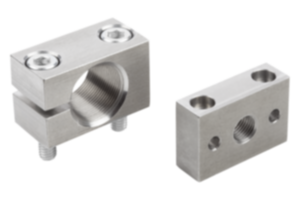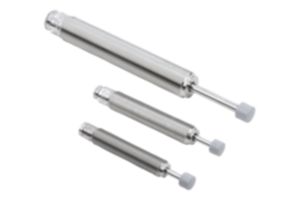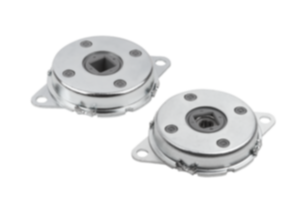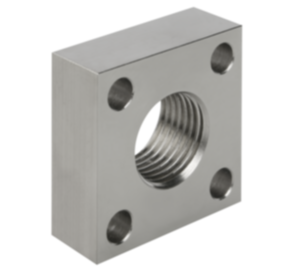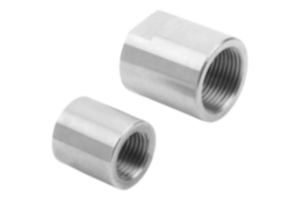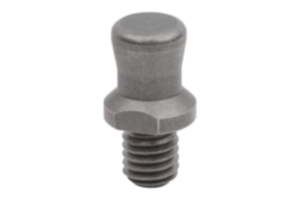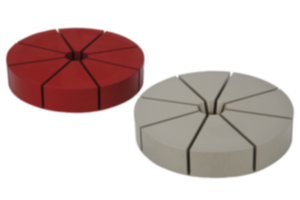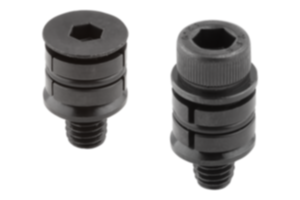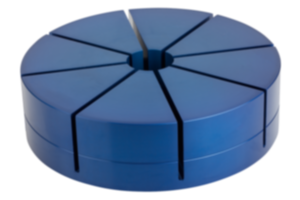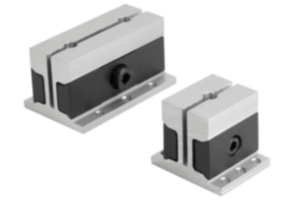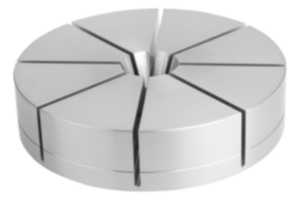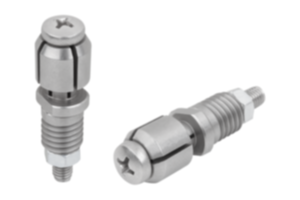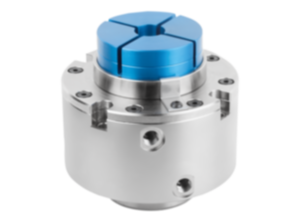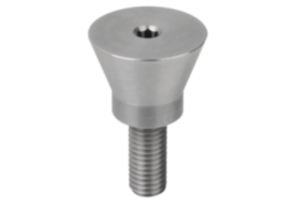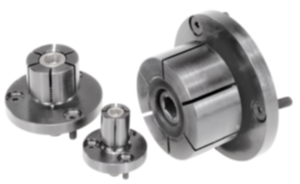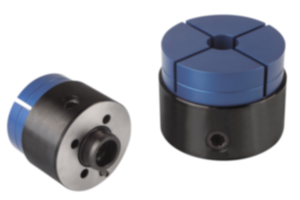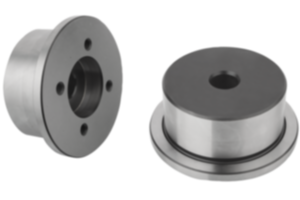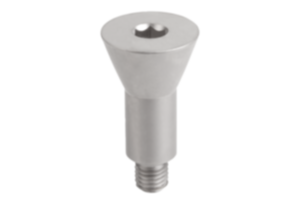Pneumatic cylinders from norelem
The norelem pneumatic cylinders perform a linear movement with the aid of compressed air. Pneumatic cylinders are also known as compressed air cylinders. The pneumatic cylinders can be operated with filtered dry air or lubricated air and unlubricated air. They are suitable for ambient conditions with a temperature range of -20°C to +80°C.
Due to the robust design, these pneumatic cylinders can be used for diverse applications in many different sectors. Examples of applications for pneumatic cylinders are injection moulding tools, conveyor, drive or handling technology.
Construction & operating principle of pneumatic cylinders
The materials used in the entire range of pneumatic cylinders from norelem are aluminium or stainless steel for the cylinder tube, aluminium or die-cast aluminium for the end cap, stainless steel or heat-treatable steel for the piston rod and polyurethane or acrylonitrile-butadiene rubber for the piston and piston rod seal. The cylinder pistons are made of brass, the piston guide bush of sintered bronze.
The cylinder tubes are supplied anodised or bright, the end caps bright, painted or anodised, the piston rods bright or hard chrome-plated (depending on model).
Pneumatic cylinder versions
The pneumatic cylinders are available in three different versions in the norelem online shop, as standard pneumatic cylinders, compact pneumatic cylinders and as round pneumatic cylinders.
Pneumatic standard cylinders acc. to DIN ISO 15552
The standard cylinder in lightweight design acc. to DIN ISO 15552 is available with piston diameters of 32 to 80 mm and stroke lengths of 25 to 250 mm. Due to its optimised design, 20 percent of the material can be saved during production of this standard cylinder. The cylinder tube is made of anodised aluminium, the piston rod of hard chromed, heat-treatable steel. The piston rod with external thread has adjustable pneumatic damping and can be supplemented with position sensors.
DIN ISO 21287 double acting pneumatic compact cylinders with magnetic piston
The compact cylinder acc. to DIN ISO 21287 from norelem can be supplied with internal or external thread, piston diameters from 20 to 40 mm and stroke lengths of 10 to 50 mm. The compact cylinders acc. to DIN ISO 21287 are equipped with elastic damping on both sides and can be supplemented with position detection for proximity switches. The cylinder tube is made of anodised aluminium, the piston rod of stainless steel. The compact cylinder is particularly suitable for use in confined installation spaces. The pressure applied to the pneumatic cylinder responds promptly.
Pneumatic round cylinders acc. to DIN ISO 6432
Like the pneumatic compact cylinder, the round cylinder acc. to DIN ISO 6432 from norelem also has elastic damping on both sides and can be supplemented with positioning detection for proximity switches. The round cylinder has piston diameters from 10 to 25 mm and stroke lengths of 10 to 200 mm, the material is stainless steel. The round cylinder is also characterised by standardised fit precision. Pneumatic round cylinders are ideal for applications with lighter loads or forces and can also be installed without fastening elements.
Single acting vs. double acting cylinders
In the norelem online shop and THE BIG GREEN BOOK a distinction is made between pneumatic cylinders with single acting and double acting cylinders.
Single acting pneumatic cylinders | Double acting cylinders |
Only have one air connection | Are controlled exclusively with compressed air |
Move back to the starting position with the help of a spring | Compressed air extends and retracts the pneumatic cylinders |
| When retracting and extending, the pneumatic cylinder can operate at almost full force |
Advantages of pneumatic cylinders
- Infinitely variable control or regulation of the speeds and forces of the cylinders
- Achievement of enormously high working speeds
- In the event of an overload or even a standstill, compressed air devices generally have the advantage of remaining undamaged
- Compared to electrical devices, compressed air devices have simple designs; that is why they are generally lighter
- Unlike electrical systems, in pneumatic systems the waste heat is not generated at the decentralised electrical drive units, but instead centrally at the compressor itself, without exception
- Pneumatic systems do not require return lines because the exhaust air produced can escape directly into the surrounding area
